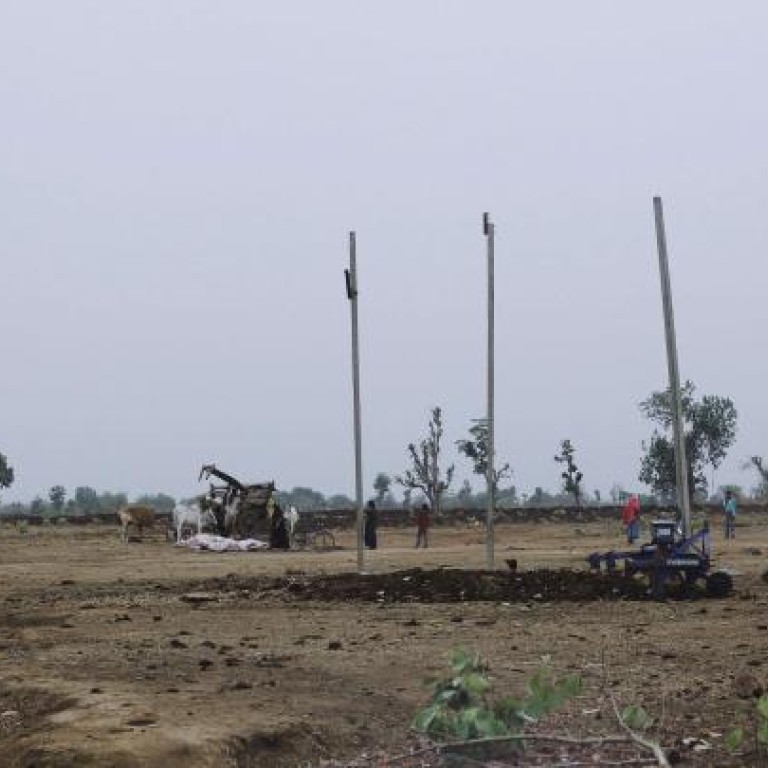
Growth trickles down to rural India
Kevin Rafferty finds out the limits of one village's new prosperity
India's great economic growth has begun to trickle down to some of the poorest, most neglected villages. But the progress is desperately slow and handicapped by the failure of the government to do its job properly, especially in providing essential infrastructure, public utilities, clean water and education.
At Paltoo Ka Nangla, a village of 350 households in Uttar Pradesh about 50 kilometres from the historic city of Agra, the electricity lines finally arrived two years ago.
There are other signs of progress that I had not seen in 20 previous visits over 40 years. Paltoo has a tiny shop, whose owner plays proudly with a mobile phone which can pick up signals loud and clear from anywhere in the world. The streets, muddied by the assorted droppings of meandering buffalo, are littered with red sandstone rocks waiting to be incorporated into houses.
The biggest surprise is finding about 80 children, from the age of five to early teens, sitting on sheets laid on the mud in the centre of the village attending school.
One boy shows his exercise book where he has written English sentences mixed in with his Hindi. "Rain, rain, go away; come back on another day", it says, but the boy does not understand it. Nor does the male teacher, who cannot speak English. A female teacher makes her rounds with a stick, which she switches to still any rowdiness and keep the baby buffalo from joining the class. This is a private school, charging 100 rupees or about US$2 a month for each pupil. There is a government school in the nearby bigger village about a kilometre away, "but there is no point in going there because the teachers do not turn up", explains one of Paltoo's adults.
Absentee teachers are a common problem across India, according to studies by the World Bank and other aid agencies. The government is often late or fails to pay the paltry salaries, or teachers are unhappy working far from home in rural areas. You may wonder how much graduates of Paltoo's school will learn: not enough to gain entry to a top university. But if Paltoo's children learn basic reading and writing, it may keep their dreams alive.
Paltoo's new prosperity has severe limits. Most houses now have brick or stone foundations. Electricity has brought basic lighting, and televisions for 15 homes. The fields are green with crops, thanks to a good monsoon.
But the money making the village more prosperous has mostly come from workers who have gone to Agra or Mumbai to seek their fortunes. The villagers complain that life is tougher because there is little water and all the wells have run dry.
Recent relative prosperity has not turned Paltoo into a rural idyll.
Nor is it wretchedly poor and desperate, compared to slums in Delhi, Mumbai or Calcutta. But slum dwellers have the opportunities of the big city.
Government failure and corruption hold back India. There is now a wonderful six-lane expressway between Delhi and Agra, hardly used because of the 510 rupee toll for 24 hours. And, to get to it, you have to suffer the traffic jams of Noida, and it tips you into the rowdy Agra traffic, 10 kilometres from the Taj Mahal.
As a final treat, I went to see sunrise over the Taj from across the Yamuna river, which 10 years ago had yielded pictures of the monument reflected in the river. This time, the river had retreated 50 metres to become a polluted stream, and access was restricted to a small spot by security forces, who had strung barbed wire along the bank.
There was a gate, which was open, but the guard said, "No entry; security", and then proceeded to go through it. I took a picture of the Taj through the barbed wire, which was itself being overrun by weeds. It seemed a fitting picture for India, held back by official incompetence and insecurity.

